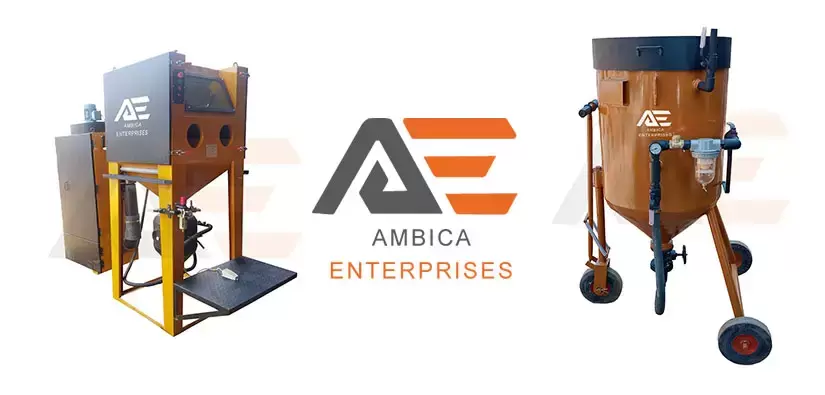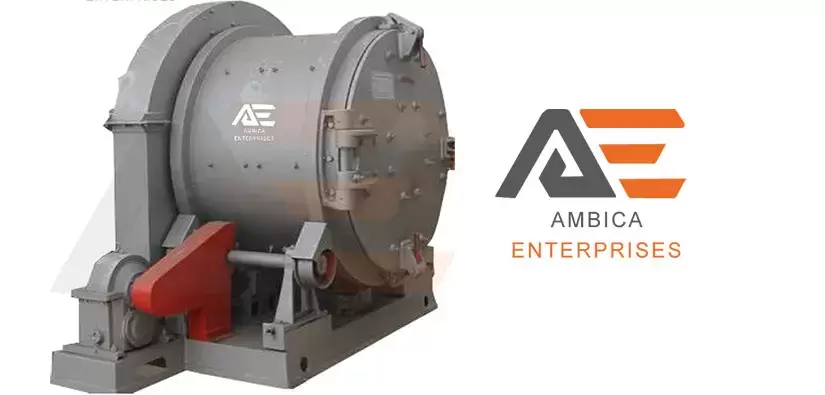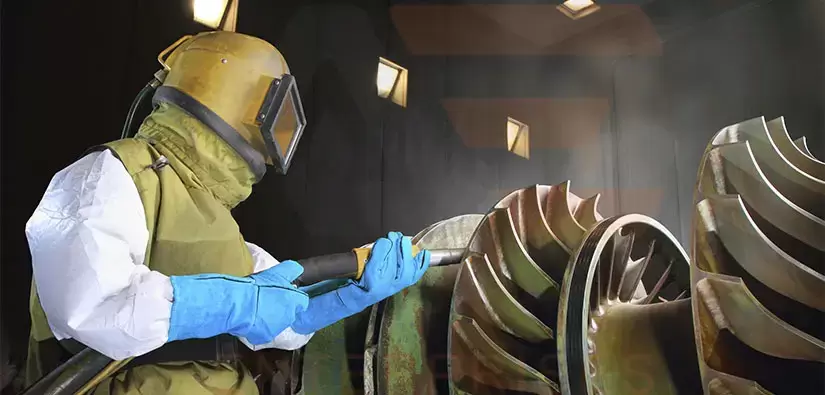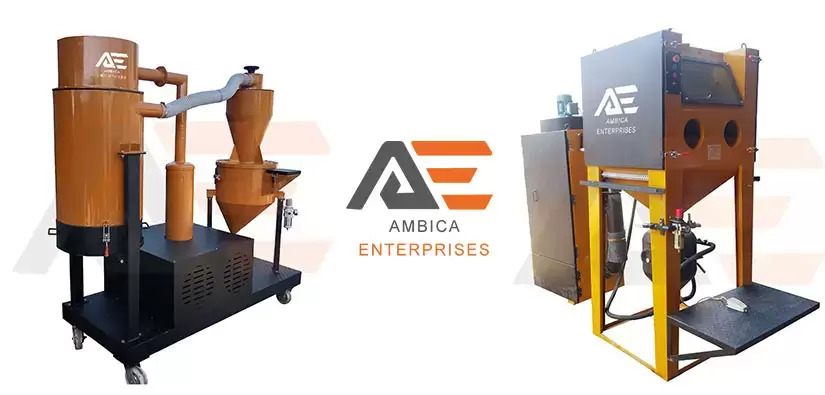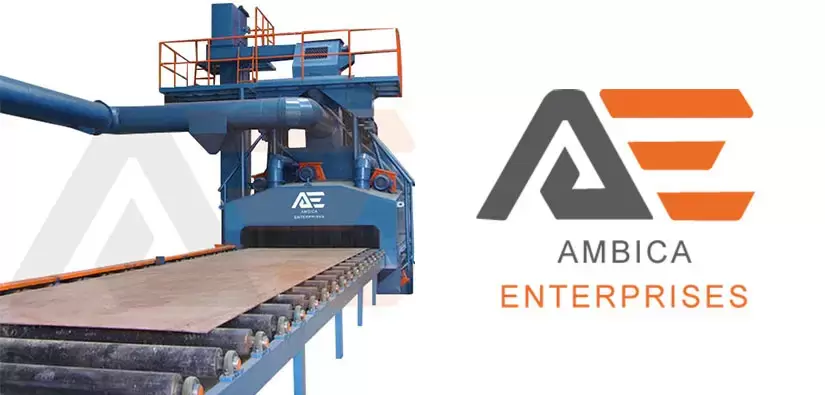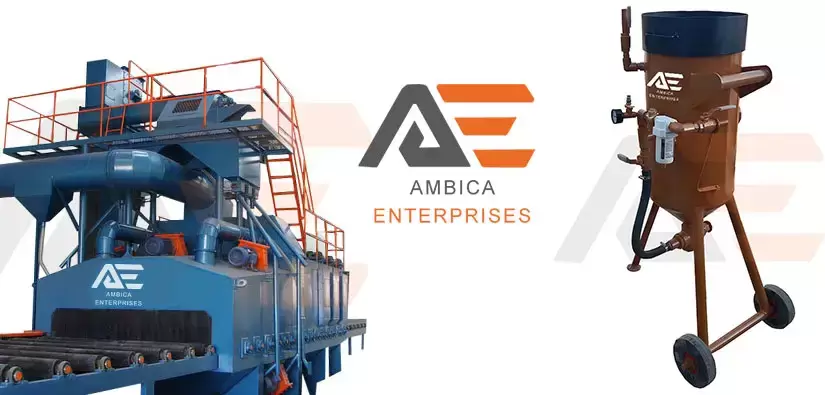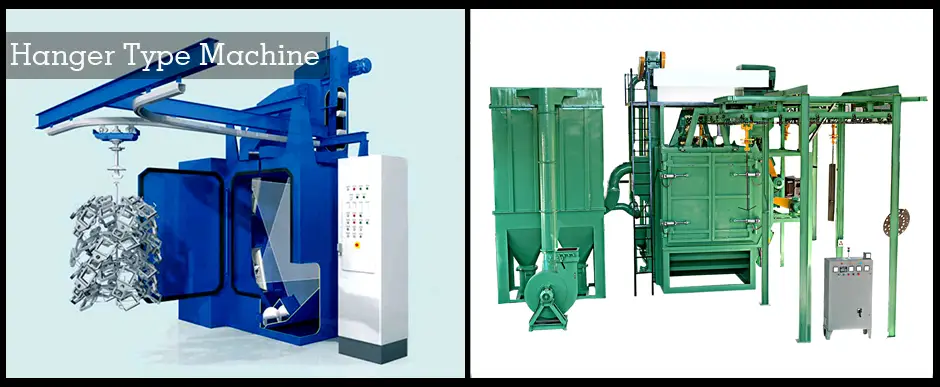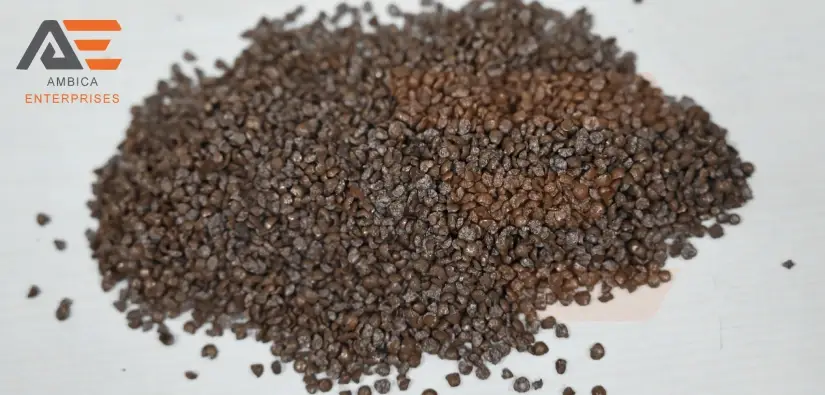
A high-quality steel grit should function consistently and effectively, limit consumption and dust, and provide little danger of harming the surface being treated. For safe and efficient use, it is crucial to pick the appropriate type of steel grit for the given application and abide by the manufacturer's instructions.
What is Steel Grit?
Steel grit is a flexible and powerful abrasive that is used in various industrial applications to produce high-quality surface finishes and improve the functionality of metal components. An abrasive substance known as steel grit is frequently utilized in a variety of industrial processes like cleaning, shot peening, and surface preparation. Steel shot is broken into angular particles of various sizes, shapes, and hardnesses to create it.
Depending on the purpose, steel grit comes in a range of sizes, from fine to coarse. The aggressiveness and depth of the surface profile created by the steel grit particles depend on their size. Another critical element is the steel grit's hardness, which affects both how long the abrasive will last and how much dust will be produced throughout the blasting process.
Steel grit provides a more aggressive cutting action than other abrasives, including sand or glass beads, due to its angular nature. It is perfect for situations where a high-quality surface finish is required since it can remove coatings, rust, and other surface pollutants fast and effectively.
Steel grit particles
A broken steel shot is used to generate the angular abrasive steel grit particles. Depending on the purpose, they come in a variety of sizes and hardness levels. Steel grit typically comes in sizes between 0.2 and 2.5 mm, with larger particles being more aggressive and producing deeper surface profiles.
The Rockwell C scale is used to determine the hardness of steel grit particles, and the normal range is 40 to 65 HRC (Rockwell hardness scale). While more resilient and able to endure more impact and wear, harder particles may produce more dust when being blasted. While less durable, softer particles can produce a smoother finish and produce less dust.
Applications of steel grit
Steel grit is a multipurpose abrasive material that may be applied in a variety of ways to produce high-quality surface finishes and enhance the functionality of metal parts. Because particle size and hardness can have an impact on performance and quality, it is essential to choose the appropriate type of steel grit for the intended application.
The versatile abrasive media steel grit is used in a wide range of industrial processes, such as surface cleaning, surface finishing, and preparation of surfaces. Here are a few of the most typical uses for steel grit.
Blast cleaning
In blast cleaning processes, steel grit is frequently utilized. It is applied to a surface using compressed air or another method. The abrasive particles clean the surface by removing impurities like rust and coatings while also forming a surface profile that improves the application of the following coatings.
- Deburring- Metal items, including castings and forgings, can have burrs and sharp edges removed with steel grit, leaving behind smoother safer edges.
- Water jet cutting- Steel grit can be blended with water or other liquids to produce a cutting stream capable of slicing through strong substances like steel and concrete.
- Shot peening- Shot peening is a method that increases the fatigue life and resistance to stress corrosion cracking of metal components by applying compressive stresses. Steel grit particles are utilized in this process.
- Rust removal- Metal surfaces can be effectively cleaned and corrosion-free by using steel grit to remove rust and corrosion.
- Surface finishing- Steel grit can be used to give metal items the required surface quality, including a matte or textured finish.
- Reclamation- Reusing and recycling used steel grit helps to reduce waste and its negative effects on the environment.
- Cleaning and stripping- Steel grit can be used to clean and strip a variety of surfaces, including metal, wood, and concrete, by removing paint, coatings, and other impurities.
Also Check - Shot Blasting for Concrete Surface Preparation
How to Make Steel Grit
For applications such as surface preparation, cleaning, and shot blasting, steel grit, a type of abrasive substance, is frequently used in industries. Steel shot is crushed into angular particles and then screened to guarantee uniform size and shape to create the product. Although the production of steel grit is relatively straightforward, it needs specialized equipment and stringent quality control to guarantee that the finished product fulfills industry standards.
Source high-quality steel shot
To make steel grit, a high-quality steel shot must first be obtained. High-quality steel that has been melted and atomized into tiny particles to form a spherical abrasive substance is used to make steel shot. Steel shot must be of a uniform size, high quality, and devoid of impurities and flaws when used to make steel grit.
Crush the steel shot
The next stage is to crush high-quality steel shot into angular particles after you have obtained it. Usually, a specialized crushing machine is used for this, which uses force and pressure to crush the steel shot into smaller bits. Steel grit is created from the resulting angular particles.
Screen the crushed steel shot
The steel shot must first be crushed, and then the resulting particles must be screened to make sure they are uniform in size and shape. The crushed steel shot is typically put through a series of screens with varying mesh sizes during the screening process. The screens ensure that the final steel grit is of uniform size by removing any particles that are too large or too small.
Heat treat the steel grit
After being screened, the steel grit is heated to increase its tensile strength and hardness. The steel grit is heated to a high temperature during the heat treatment process, and then it is quickly cooled. The steel grit is strengthened through this procedure, increasing its durability.
Quality control
To guarantee that the finished steel grit fulfills industry standards, quality monitoring is crucial throughout the whole production process. Testing the raw ingredients, keeping an eye on the production process, and checking the end product for uniformity and quality all fall under this category.
How to Identify the Quality of Steel Grit
Popular abrasive media like steel grit are utilized in several processes like peening, shot blasting, and surface preparation. The efficiency of these procedures can be significantly impacted by the steel grit quality. Here are some pointers to help you determine the steel grit quality.
Check the size and shape
The quality of steel grit is significantly influenced by its size and shape. The steel grit should be uniform in size and shape and free of any flaws or defects. A high-quality steel grit will function consistently during abrasive blasting because of its homogeneous size and shape.
Assess the hardness
Another essential factor to think about is the steel grit hardness. The steel grit needs to be tough enough to efficiently remove surface impurities while also being gentle enough not to harm the substrate underneath. A high-quality steel grit will have a consistent hardness level throughout. Hardness is commonly measured on the Rockwell scale.
Check the cleanliness
Steel grit may contain pollutants that degrade its performance, including rust, dust, and other impurities. A high-quality steel grit will be spotless and devoid of any visible impurities. To avoid contamination, look for steel grit that has been handled and kept correctly.
Think about the production process
Steel grit quality can also be impacted by the manufacturing process used to create it. To ensure that the steel grit is free of impurities and has a constant composition, look for steel grit that has been produced using a high-quality technique, such as a melting and atomizing process.
Verify the reputation of the supplier
When selecting steel grit, take into account the reputation of the maker. Identify producers of high-quality abrasive media by looking at their track record. To make sure you are buying a high-quality product, read reviews and seek advice from business experts.
What is the Hardness Of Steel Grit?
The ability of steel grit to withstand wear or deformation is referred to as hardness. It is rated on a scale of 1 to 10 on the Standard scale. As compared to other abrasive substances like sand or glass bead, steel grit has a hardness that is normally between 7 and 8 on this scale.
How measured the Hardness Of Steel Grit
Steel grit has a high degree of hardness, which is useful for cleaning and preparing surfaces since it can remove stubborn coatings and surface impurities without harming the underlying substance. It can also impose deep compressive stress on the surface of the material being peened, extending its fatigue life and enhancing its resistance to cracking. This makes it beneficial in shot peening applications.
The efficiency of steel grit in many industrial applications depends critically on its hardness. Its extreme hardness makes it the perfect abrasive for cleaning, shot peening, and surface preparation applications. To choose the best abrasive for each application, it is important to determine the hardness of steel grit using the proper methods.
5 Brilliant Ways To Use Steel Grit
Steel shot is crushed to produce steel grit, an incredibly useful abrasive substance. For the preparation, cleaning, and polishing of metal surfaces in industrial applications, it is a common choice. Steel grit is renowned for its resilience, toughness, and capacity to remove tenacious coatings and rust from surfaces. You can utilize steel grit in five important inventive ways.
1. Surface Preparation for Coatings
Steel grit is frequently used to roughen surfaces so that paint, powder coating, or plating can adhere better. The rust, old paint, and other pollutants can be removed from surfaces using steel grit's abrasive qualities, producing a clean, roughened surface that is suitable for better coating adhesion. This can considerably increase the coating's lifespan and lessen the possibility of it peeling or flaking over time.
2. Removal of Corrosion and Rust
Steel grit is a fantastic choice for businesses that work with metal products that are exposed to severe environments since it is very good at eliminating rust and corrosion from metal surfaces. It may rapidly and effectively remove rust, corrosion, and other surface impurities that can weaken metal structures and eventually cause them to fail.
3. Shot Peening
Creating compressive stress on metal surfaces is a method called shot peening that uses steel grit. Metal parts' fatigue life can be significantly extended using this technique, which reduces the risk of them failing under stress. To improve the toughness and endurance of metal products, shot peening is frequently employed in the manufacturing, aerospace, and automotive sectors.
4. Deburring of Metal Parts
Metal items can be made safer to handle and less prone to hurt people by having burrs and sharp edges removed with steel grit. Steel grit's abrasive qualities make it simple to remove sharp edges from metal components, leaving behind a smooth, polished surface that is secure for handling.
5. Cleaning and Polishing of Metal Surfaces
Steel grit is a multipurpose abrasive that can be used to polish metal surfaces to a brilliant sheen. Metal surfaces can have surface flaws, scratches, and other defects removed, providing a polished and smooth finish. This makes steel grit the perfect option for sectors like the jewelry and ornamental metalwork industries that demand very attractive metal surfaces.
Steel Grit Characteristics
A highly efficient and adaptable abrasive, steel grit is perfect for a variety of surface preparation and cleaning tasks. Its great endurance, angular shape, and high hardness make it a preferred option for blasting operations, and its low dust and low friability contribute to decreased waste and increased safety.
Steel Grit Hardness
Steel grit is well known for its exceptional hardness, which enables it to remove difficult coatings and surface impurities successfully. Using the Rockwell C scale, which has higher values denoting greater hardness, steel grit's hardness is commonly tested. A common steel grit has a hardness of 55 to 60 RC.
Steel Grit Durability
Steel grit is an extremely tough abrasive that can be used repeatedly before needing to be changed. As a result, it is an affordable option for blasting operations that demand a significant amount of abrasive material.
Angular shape
Steel grit has an angular shape that aids in its ability to cut through coatings and surface impurities more effectively than spherical abrasives like glass beads or plastic media. Steel grit's sharp edges also contribute to a rougher surface roughness that is perfect for fostering adherence in coatings and other applications.
Distribution of sizes
Sizes of steel grit are available, commonly ranging from G10 (0.18 mm) to G120 (0.08 mm). With bigger grit sizes being utilized for more aggressive blasting operations and smaller sizes for finer surface preparation, the choice of grit size depends on the application.
Low levels of dust
Steel grit produces far less dust than other abrasives, such as sand or slag, which might be beneficial in a situation where dust management is an issue.
Low friability
Steel grit has a low friability, which makes it less probable than other forms of abrasives to dissolve while in use. As a result, less dust and trash are produced during blasting operations, and the abrasive material lasts longer.
Top 6 Benefits Of Steel Grit?
Here we explain the Top 6 benefits of Steel Grit. Steel grit has many advantages over other materials, such as high durability, high abrasion resistance, constant particle size, Lowest Dust Production, adaptability, and non-toxic status. High-performance steel grit is a type of abrasive substance. In the surface preparation sector, it is frequently used to clean, strip, and ready surfaces for future treatment.
1. High Durability -
Steel grit is a cost-effective option for many industrial applications because of its excellent durability and ability to be recycled numerous times. It has a lengthy lifespan, allowing for continuous use without losing its abrasive qualities.
2. High Abrasion Resistance -
Steel grit is a highly abrasive substance that can easily remove impurities and resistant coatings from a range of surfaces. It is ideal for use in demanding situations when other abrasives might not work.
3. Consistent Particle Size -
Steel grit gives a homogeneous surface polish due to its consistent particle size. This is significant for many applications since coatings and other surface treatments must adhere correctly to a uniform finish to work.
4. Lowest Dust Production-
Steel grit is an option that is safer and better for employees' health because it generates very little dust. In applications where dust may be toxic or cause respiratory issues, this is extremely critical.
5. Versatile -
Steel, concrete, stone, and wood are just a few of the surfaces that steel grit can be applied to. This makes it a flexible option for a variety of tasks, such as rust removal from metal surfaces and surface cleaning and preparation for painting.
6. Non-toxic -
Steel grit is a safe option for use in industrial and commercial applications because it is non-toxic and eco-friendly.
5 Simple Steps To An Effective steel grit Strategy
Understanding the surface to be prepared, selecting the appropriate grit size, selecting the necessary tools, establishing a safe working environment, and correctly discarding old steel grit are all critical steps in developing an efficient steel grit strategy. You may develop a successful steel grit strategy that guarantees your project is finished safely, effectively, and to the highest standard by using the five phases listed below.
1. Understand the Surface to be Prepared -
The first step in creating a successful steel grit approach is to understand the surface that needs to be prepared. The kind of material, its state, and any impurities or coatings that might be present are all included in this. The required steel grit size and quantity can be calculated using this information.
2. Choose the Right Steel Grit Size -
To successfully prepare a surface, the proper grit size must be chosen. The ideal grit size for heavy-duty tasks for removing thick coatings is larger; the best grit size for finer surface preparation is smaller. Based on the surface to be prepared and the needed level of abrasion, it is crucial to select the appropriate grit size.
3. Determine the Required Equipment -
Choosing the right tools for the job is the next step in developing a successful steel grit strategy. This comprises the kind of blasting apparatus, such as a sandblasting or shot blasting machine, and the appropriate safety gear, such as respirators, protective gear, and eyeglasses.
4. Establish a Safe Work Environment -
While using steel grit to prepare surfaces, safety is the primary priority. A safe working environment must be created, and this includes using the right safety gear and ensuring that there is adequate ventilation. Also, workers need to receive training on proper equipment usage and steel grit blasting best practices.
5. Properly Dispose of Used Steel Grit -
An essential component of any successful steel grit plan is the proper disposal of spent steel grit. Spent steel grit should be collected and disposed of properly following local laws. It may also be possible to recycle or reuse leftover steel grit, which can cut expenses and waste.
What are the Effects of Steel Grit on Surface Integrity?
Steel grit is a common abrasive substance, In many industrial settings, including surface preparation, cleaning, and surface finishing. Steel grit can significantly affect the surface integrity of the material being worked on when employed as an abrasive substance. The impact of steel grit on surface integrity will be discussed in this article.
Before anything else, it's essential to understand what is defined by "surface integrity." Surface integrity describes a material's surface's physical features, such as its texture, roughness, hardness, and other physical characteristics. A material's overall performance and lifetime can be significantly impacted by its surface integrity.
Positive and negative impact
Both positive and negative impacts on the surface integrity of the material being worked on might result from the usage of steel grit as an abrasive substance. The good news is that steel grit can assist in removing surface impurities like rust, paint, and other surface coatings. To improve the surface's ability to connect with other substances like adhesives and coatings, it can also aid in the texture of the surface.
Steel grit can potentially harm surfaces, which is one of its main drawbacks. Steel grit is a highly abrasive substance that can harm the surface of a material if it is applied under excessive pressure or to a substance that is not resistant to abrasion. Scratches, gouges, and other surface flaws can result from surface damage, which might jeopardise the stability and durability of the material.
Steel grit can have both favourable and adverse impacts on surface integrity. It is crucial to adhere to the right safety procedures to make sure that steel grit is used successfully and safely.By doing this, the potential benefits of steel grit can be maximized while any possible drawbacks can be reduced to obtain the necessary surface integrity and finish.
